17 Best Floor Fan Indoor Airflow
Fan are available in various designs and with different technologies. A
small table fan with different blades than a square tower fan. There are
classic rotor models or modern devices that produce air currents without
visible blades. We compared the functions, settings, and performance of the
17 best fan. In the following guides, we explain various device designs,
break into important buying criteria and answer frequently asked questions
about the system.
17 Best fans in big comparison
1. OZAVO Menara Tower Fan
This model from Ovazo is a fan of the classic tower. It is 78 centimeters
high, 22 centimeters wide and 21 centimeters deep. It weighs 2.5 kilograms
and the length of the connection cable is 1.40 meters. With an output of 45
watts, it reaches a volume of 57 decibels. A total of three fan levels are
available. The switchable oscillations have a radius of 75 degrees and thus
ensure pleasant air circulation.
Storage for the remote control: The manufacturer has pinned a recess
at the top of the fan for the remote control. Here he finds space and does
not get lost.
The timer allows programming for a runtime of up to 8 hours. The fan is
made of plastic and is available in black or white. For transporting the
device, it has a handle on the back. The included remote control, which can
be used to control all relevant settings, is handy. A customer at Amazon
describes the fact that the device always beeps when settings change as a
disadvantage. This sound cannot be disabled.
Does the fan cool the air? The fan is not air conditioning and can't
lower the room temperature by blowing cold air. They do not cool the air in
the room, but the air around our skin. It is higher than the ambient
temperature because of our body temperature. How different types of fans
work and how to optimize a room's climate are described below in this
guide.
Advantages
- Storage for remote control
- Carrying handle for easy transportation
- Oscillation
Deficiency
- Confirmation tone cannot be turned off
2. Honeywell HO-5500RE Tower Fan
This model from US manufacturer Honeywell is a tower fan with a sleek look.
Compared to base fan, these take up less space and are easier to
store.
The Honeywell HO-5500RE tower fan offers the following functions:
- Remote control
- Three levels of speed
- Three programs with simulation of natural wind behavior, including wind speed reduction can be simulated
- Timer
- LED Display
Is there a fan that can effectively circulate air throughout the room?
Some models can do that. The ventilation effect depends on the size of the
room and the power consumption of the fan. We provide more information on
proper fan use at the bottom of the guide.
The front of the tower fan is rotatable, rotating about 110 degrees, which
allows the model to cover a large area. With a timer, the fan can be
programmed up to 4 hours. Three switching levels and a wind function offer
the possibility of adjusting the airflow according to personal requirements.
With a noise level of 52 decibels, this fan is one of the quietest in its
class.
The included remote control, which can be used to quickly and easily
operate the tower fan, should be mentioned as a convenience feature. The
remote control can be stored in an easy-to-reach compartment.
Advantages
- Can simulate natural wind
- With remote
- Relatively quiet
Deficiency
- LED display cannot be turned off
3. AmazonBasics Portable Tower Fan
The AmazonBasics oscillating tower fan comes in three speed levels and has
a cooling capacity of 45 watts. According to the manufacturer, this model
has a large, easy-to-use switch and wide oscillation to cool a wider area.
The manufacturer describes the design as space-saving, modern and compatible
with many furniture styles.
The AmazonBasics tower fan has a handy timer that can be set up to 3 hours.
After the specified time has elapsed, the device turns off automatically.
The dimensions of this device are compact. According to the manufacturer,
the fan can be stored to save space.
Advantages
- Slim and compact
- Timer
- Large oscillation angle
Deficiency
- No remote control
4. Dyson Air Multiplier AM07 Menara Tower Fan
The Dyson Air Multiplier AM07 is the ultimate tower fan. This model has a
simple and modern design and has ten levels of airflow which can be
controlled with the included remote control. Curved and magnetic remote
control for convenient storage right on the device. The fan has no rotor but
works with Air-Multiplier™ technology.
What is the Air-Multiplier™ technique? This technical solution is
used by most fans without turning the blades. A motor forces air through
circular slots in the housing and sucks in ambient air at the same time. In
our guide that follows the product comparison, we go further into how the
Air Doubler fan works.
This fan tower in our comparison creates a maximum air circulation of 500
liters per hour and simultaneously cleans the stuffy room air. It has a
sleep timer that can be programmed in intervals of 15 minutes to 9 hours and
turns off the device after the specified time has elapsed.
The manufacturer emphasizes the quiet and pleasant operation of the fan.
This device has what is called a Quiet Mark award. It is a registered
trademark of the Noise Abatement Society - a British company with a
non-profit goal to raise awareness and find solutions to noise
pollution.
Advantages
- Ten levels of airflow
- Air Multiplier Technology™
- Magnetic remote control
- Calm Award
Deficiency
- No Schuko plug according to Amazon buyers
5. Rowenta VU5640 Turbo Silence Extreme Floor Fan
The Rowenta VU5640 floor fan is a classic rotor model. The wingspan of the
fan blades is 40 centimeters. The five-bladed rotor must ensure strong
airflow. The fan is equipped with four modes:
- Four conventional fan speeds
- Oscillating mode
- Night mode
- Turbo Boost Mode
In night mode, the Rowenta Turbo Silence Extreme VU5640 works quite quietly
at around 45 decibels, in turbo boost mode, the propeller circulates up to
80 cubic meters of air per minute.
The advantage is the adjustable height. The carrying handle on the back of
the floor fans makes it easy to transport the fan. At maximum power level,
59 decibels can be heard with this stand-up device. According to the
manufacturer, this model can mimic a gentle breeze through variations in
airflow and has an automatic shut-off switch.
Advantages
- Four modes
- Very quiet in night mode
- Auto disconnect
- adjustable height
- High performance
Deficiency
- No remote control
- Small oscillation angle
6. ANSIO Tower Fan
With a height of 75 centimeters, the tower fan from ANSIO can be used both
as a floor fan and as a desk fan. Airflow strength can be adjusted to
individual needs with three running speeds. The fans can oscillate at a 90
degree angle to cover a wider area. Oscillation can be set separately. The
control panel is located at the top of the device.
The tower fan is equipped with a timer that can be programmed for up to 7.5
hours and turns off the device after the specified time has elapsed.
With a power consumption of 45 watts, the tower fan has average power.
According to the manufacturer, it is very light and easy to carry with the
handle at the top.
Advantages
- Suitable for use on the table and on the floor
- Timer
- Carrying a handle
- Color selection
Deficiency
- No remote control
- Relatively small oscillation angle
7. Aigostar Eiffel 33JTT Tower Fan
The 33JTT Aigostar Eiffel tower fan has a power consumption of 45 watts and
three speeds. The oscillation angle is 70 degrees and the maximum airflow is
23.4 cubic meters per minute.
With three wind settings: In addition to the three speed levels, the
Aigostar Eiffel 33JTT tower fan also has three different wind settings for
different winds. The user has a choice between natural, normal and shallow
winds.
The device can be controlled with the included remote control. The fan has
a programmable timer for up to 8 hours. After the specified time has
elapsed, the device turns off automatically.
Advantages
- With three levels of speed and wind
- Integrated timer
- With a recess on the back for carrying handles and storage options
Deficiency
- Cannot be adjusted in height
- Transportation is relatively difficult
8. BRANDSON Floor Fan
This 122-centimeter floor fans has three different speed levels and,
according to the manufacturer, a very high airflow rate. The BRANDSON base
fan is equipped with an oscillation function with an angle of about 80
degrees, which is said to increase efficiency. Classic fans from the lower
price segment have rotor blades secured by a protective grille. The stand is
height adjustable.
9. Interior TF35 Tower Fan
The TF35 Interior tower fan is medium in size with a height of 78
centimeters and is especially suitable for use as a floor model. The tower
fan has an output of 45 watts and an airflow of 150 cubic meters per hour.
The model is suitable for a room with a size of 35 to 40 square
meters.
Performance can be classified by determining the air flow rate. Air
Circulation is measured in air per hour that passes through the unit. This
allows you to calculate the size of the room suitable for cleaning.
According to the manufacturer, this fan has a modern design and blends well
with various living rooms. According to the manufacturer, the quiet and
powerful motor, oscillation function and three speed levels ensure good air
circulation. The model has a handy handle on the back. A refreshing towel
set from Filabe Switzerland is equipped with a fan with good air
circulation.
10. Honeywell HT-900E Desk Fan
According to the manufacturer, this little device is a low-power but
powerful turbo fan. This is a low-cost model whose acquisition costs are in
the low double-digit range. The rotating range of the turbo table fan is 90
degrees.
This model can be placed on the table. It is also suitable for wall mount
which saves space.
This device from our comparison comes with three speed levels. The fan can
be tilted for a more optimal adjustment of airflow. The noise level is set
at 39 decibels, which is the upper limit of the recommended noise level for
living rooms. Weighing just over a kilogram, the Honeywell HT-900E table fan
is mobile and, according to the manufacturer, versatile.
11. Brandson 784641684 Fan
The Brandson fan 784641684 is a tower fan and is equipped with a 45 watt
motor. It has a fixed height of 96 centimeters. Thanks to the 60 degree
oscillation, the fan should be able to provide a refreshing flow of air both
horizontally and vertically. This model offers a total of three operating
modes: In normal mode, the fan rotates continuously at a preset speed,
according to the manufacturer, in sleep mode, it reduces the speed by one
level every 30 minutes until it shuts down. And in natural mode, it has to
switch between air currents of different strengths and provide a breath of
fresh air.
Three speed levels and timers: According to the manufacturer, the
Brandson 784641684 tower fan offers three speed levels "Low", "Medium" and
"High" and a timer with an off time of one to 12 hours.
According to Brandson, all functions are controlled either through the
small LED display in the house or via the supplied remote control. The
current room temperature is also displayed on the screen. According to the
manufacturer, the height and slope of the tower fan cannot be changed. The
scope of delivery includes batteries for the remote control and a German
operating manual. Standby consumption ranges between 0.32 and 0.62 watts
depending on display status.
Advantages
- With sleep mode
- Remote control
- Timer
- Color selection
Deficiency
- Small oscillation angle
12. Floor Fan Fakir VC 40 S Prestige
The Fakir VC 40 S Prestige fan is designed in dark gray and silver. It has
a telescopic stand, which the manufacturer says is stable. The fan height
can be adjusted between 120 and 140 centimeters. There is also an option to
change the tilt angle to suit your own needs. The fan also has an
oscillation function. The swivel range is up to 20 degrees in the vertical
direction and up to 50 degrees in the horizontal direction.
Other features include a timer and three wind modes. Using the timer it is
possible to set a maximum timeframe of 7.5 hours. As soon as the specified
time has elapsed, the device turns itself off. The three wind modes of the
pedestal fan include:
- Normal: In this mode, the fan works in normal mode.
- Sleep: In sleep mode, the device switches to a lower speed level after every half hour.
- Natural: In Natural mode, the fan changes its speed at different time intervals.
The base fan air throughput is 1,900 cubic meters per hour. Models can be
operated using the buttons on the device or by remote control.
Advantages
- Adjustable height
- Timer
- Remote control
Deficiency
- Small oscillation angle
13. EasyAcc Mini Desktop Fan
The EasyAcc Mini Desktop USB Fan is a very small device and is perfect for
on-the-go use. This mini fan is equipped with a rechargeable battery that
lasts for 2 to a maximum of 8 hours. Due to its size, design, light weight,
and optional battery operation, mini fans are mobile and flexible.
You can choose from three speed levels with this fan from our comparison.
The lower the level, the longer the battery lasts. The level can be easily
adjusted using the appropriate button. To charge the battery, the fan can be
connected to a computer, a power bank or an adapter to a wall jack using the
supplied USB cable. Adapter is not included.
An interesting feature of this mini fan is the integrated LED lighting. On
the one hand, the eye-friendly blue light can provide true color play during
operation, on the other hand, the side lighting serves as a substitute for a
flashlight.
The rechargeable fan is available in three different colors. Prices vary
minimally depending on the color. In terms of price, a mini fan for
traveling is one of the cheapest devices.
Advantages
- Small and mobile
- Battery operation for on the go
- Led light
Deficiency
- Battery charging required
- Electrical operation is not possible
14. Brandson Basic S Desk Fan
This desk fan from Brandson Equipment has a classic fan shape with a rotor.
The diameter of the fan is 35 centimeters. With a decent 40 watt output for
a desk fan, this model provides cooling in summer and, according to the
manufacturer, is suitable for continuous operation.
Airflow can be set to three speed levels from low (low), medium (medium) to
high (high). Manually adjustable tilt angle provides added flexibility.
According to the manufacturer, the fans are very quiet - even at the highest
speed levels. If needed, the oscillation function can be activated. The fan
then swings back and forth at an angle of 85 degrees.
Advantages
- Small and mobile
- Relatively high performance
Deficiency
- No remote control
15. Floor Fan AEG VL 5668 S
This fan has the following properties:
- Three levels of speed
- Two programmable wind mode functions
- Programmable change of running speed at regular time intervals
- Sleep mode
- Sleep program
- Timer
With the sleep program, the fan automatically reduces running speed after
30 minutes. In addition, individual operating modes with changing airflow
rates can be programmed.
The base fan from our comparison is height-adjustable and has a timer that
allows the fan to be programmed for 7.5 hours in advance. A remote control
is included in the scope of delivery and for operation of the AEG VL 5668 S
base fan. According to the manufacturer, the base ensures a stable stand and
prevents the device from tipping over.
Advantages
- Programmable wind mode
- Sleep program
- Timer
- Remote control
Deficiency
- Slightly wobbly according to Amazon shoppers
16. Clatronic T-VL 3546 Tower Fan
This white fans from Clatronic is classified as middle class in terms of
price and features. With a height of 75 centimeters, this model is medium in
size and is suitable as a table fan as well as a floor fan.
The fan offers three speed levels and four level switches whose intensity
can be determined. If needed, the oscillating mode can be activated. The
device then makes a rotary motion: With the swivel function, the device
moves back and forth at an angle of 75 degrees.
The power consumption of this fan is 50 watts. The manufacturer describes
operating noise as quiet and unobtrusive. This model has a 120-minute timer
and a handy carrying handle that makes it easy to carry. It is available in
white and black.
Advantages
- Perfect for table and floor fans
- Timer
- Carrying a handle
Deficiency
- Small oscillation angle
17. Fan JUNG TF01
The tower fan from this lower price group has a power consumption of 50
watts. The maximum operating volume is 48 decibels low compared to other
devices. The manufacturer emphasizes the energy-saving properties of the
model: the fan has an energy efficiency class A+. It is suitable for rooms
with a maximum size of 50 square meters.
The fan has a handle on the top back for easy portability. Weighing 2.5
kilograms, the device is easy to carry and suitable for quick location
changes. The power cord has a length of 1.7 meters and an oscillation angle
of 75 degrees.
What is a fan?
The term fan comes from Latin and means "to produce wind" or "to cool a
fan". Fans fulfill this task, regardless of whether they are desk fans,
standing fans, tower fans, or other designs.
The fan creates an artificial breeze and provides a welcome cooling effect
in summer. In winter, it can prevent heat from accumulating in the room. A
few years ago there were only classic shape rotor fans for cooling, today
there are new devices with no visible blades.
How does the fan work?
The fans does a great job of cooling not only in summer. Despite the wide
variety of fans on the market, all fans use the same functional principle:
an electrical device draws in room air, accelerates it, and produces a
targeted airflow.
The function of the fan is to provide cooling. However, without additional
functions, the fans cannot lower the air temperature in the room . The
device only circulates the air and creates a breeze in the room. The fan
blows the layer of moisture that surrounds us, warmed and drenched by sweat,
away from the skin. The airflow from the fan rotates the air, the skin cools
down, we experience the evaporation effect when the moisture evaporates,
which is comfortable and refreshing. The process has no influence on room
temperature.
Depending on the model, fans generate airflow in different ways,
namely:
- The rotor fans is a classic variant. Here, the rotating motion of the rotating fan blades creates suction on the back of the device on one side and airflow away from the device on the front on the other. With the exception of some miniature models, the rotor blades are always in a tightly meshed metal or plastic grille. This ensures more security. With multiple fans, the case can be opened for cleaning. The rotation speed can usually be adjusted in several stages.
- Tower or column fans are now also one of the classics. The rotor blades are missing on this slim model. In contrast, the air pump and slat construction ensures air movement. Suction is created at the rear, while the tower fan blows air into the room on the other side.
- The bladeless fans with air multiplier function is one of the innovations on the market. Not only do they look futuristic, they work really well. Models are not completely without rotors, they are invisible and are located at the base of the fan. At the top of the fan there is a circular slot through which the air sucked in at the bottom of the device exits. The rotor blades generate air pressure, which increases by allowing air to pass through a narrow gap. A slope built into the inner surface of the hollow head directs air in a specific direction, creating rear suction and further improving airflow. This creates what is called the air multiplier effect, which creates wind.
What types of fan are there?
Fan differ mainly in their design. The following versions are available in
the market:
- Tower or column fans: These fans have a very slim design and are usually available in heights between 50 and 100 centimeters. The rotor blades are missing from the tower fan, which makes it a space-saving device. The electrically operated pump sucks in ambient air and blows it on the other side of the fan, creating a constant flow of air. Rotorless air doubling fans with open housings work on the same principle. Most tower fans are very quiet, which is why they are often used in bedrooms. Due to their small space requirements, fans are very popular for living rooms and offices. There are also models in which the wind can be set to increase or decrease.
- Base fans: They are also called floor fans and are larger than tower fans. Such fans are usually powerful, but often louder than tower fans. These fans can move large amounts of air. Then there are base fans in the classic form with rotor blades and in a new design without wings. The latter variant takes up less space.
- Desk fans: This fan is smaller than a standing fan. Such fans are available in classic versions and in modern designs without blades. Due to its compact size and design, the table fan can be used flexibly. Some models can be easily affixed to the wall to cool the room.
- Ceiling fans: Ceiling fans are only installed on the ceiling. This means that this version does not take up any space in the room. Ceiling fans are useful in homes with children or pets because they are out of reach and reduce the risk of accidents.
- Mini fans: This type of fan is usually available as a battery-operated model and is used both inside and out. Advantages of these models: They can be used flexibly. The disadvantage is very compact dimensions combined with weak performance. When the battery is charged, the device offers up to 6 hours of cooling. The small fan can be charged either through the USB port on the computer or via an adapter in the socket.
- Floor fans: This type of fan has a similar design to a table fan, but differs from the latter in that it is much larger in size. This means that they can be used in a variety of ways at home, in the office or in the workshop. They are mainly available as classics with rotor blades, the speed and angle of inclination can be flexibly adjusted. Floor fans are often very powerful, so they are perfect for larger rooms.
Pros and cons of fan
Regardless of the fan type, all designs have the same advantages and
disadvantages:
Advantages
- Provide cooling
- Can be used flexibly at home, in the office or on a covered patio
- Has multiple setting options such as airflow strength, oscillation or individual ventilation modes
- Mostly energy efficient and climate friendly
- Available in all price ranges
Deficiency
- Some interfere with the volume
- Blade fans and ceiling fans are often dust collectors
- Unlike air conditioners, they don't cool the air
- Can spread pathogens indoors
What should I pay attention to when buying a fan?
Fan are available in various designs and for different purposes. To find
the right device, the following criteria are helpful when buying:
- Room size: First and foremost, the size of the room is important to find a suitable device. In an 80 square meter room, the desk fan doesn't help much unless the user sits directly in front of the device. To create cooling throughout the room, a suitable large fan is required. For larger areas that do not have room for a base fan for example due to decoration, a large ceiling fan can be a good choice if the ceiling height is not too high. A fan with a diameter of 30 centimeters is suitable for rooms up to 25 square meters in size. If the room is larger, the device must be at least 40 centimeters high.
- Rotor blades or tower fans: Classic fans with rotor blades are usually less expensive than tower fans. However, you need more floor space. The tower fan has a sleek design and can be adjusted in a space-saving manner. Classic blade fans are available with three, four or five blades. The number and size of the wings are critical to performance. The more fan blades, the less power is needed to produce the same wind force.
- Airflow adjustment: Most fans can usually be adjusted in several stages. They offer a choice between a light breeze, a light breeze and a gale. Tower buffs often have more than three stages.
- Stability: Stability is an important criterion for base fans. After all, the device should not fall. Large budget fan blades can wobble a bit. Devices without rotor blades are usually more stable. It should always be ensured that the fan cannot be turned upside down. For households with small children or pets, a ceiling fan that doesn't take up floor space and doesn't flip is ideal.
- Volume: Volume is an important criterion if the fan is to be used in a living room or office. Most manufacturers indicate the volume of their model in decibels in the product description. Since the perception of noise can be very different, it's a good idea to look at various customer reviews of your chosen model before buying.
- Safety features: It is important for fans with rotor blades that they have a protective grille. The protective grille can be opened for easy cleaning on most models. Some devices have timers that turn them off completely or slow down your running speed at certain intervals.
- Timer and remote control: The mentioned timer is decent, especially at night. This turns off the fan after a user-defined time. A remote control makes use more convenient and is especially useful for ceiling fans.
How much does a fan cost?
Fan are available for purchase in all price ranges. Newer tower fans cost
more than classic wing fans. The cheapest models include mini fans, which
are often battery operated. However, these small devices, also known as
handheld fans, are not capable of cooling a larger area.
Most floor fans are relatively inexpensive. They have the advantage of
rotating the air close to the ground. Due to this air circulation, the
cooling effect against the floor fan is better. In addition, the tilt angle
of the floor fan can be adjusted accordingly, which creates a further
cooling effect.
A table fan as a wing fan is also an inexpensive model. They promise quick
relief on hot days by being placed around the person.
Floor fans are available in cheap and expensive versions. Performance and
properties play a role in price. If you want to buy a base fan with four or
five blades, you'll have to dig a little deeper. However, the device is more
energy efficient than a three-blade fan.
Cheap fans are readily available with low double-digit numbers. High-end
fans with air multiplier technology are commercially available for prices in
the mid-three digit range.
Where can I buy a fan?
When looking for a fan, you have a choice between an online shop and an
electronics specialist. Online trading offers a very wide range, almost
every type of fan is available. Prices are usually lower than in stores and
customer reviews will help you choose the right model. You will receive
personal advice at a specialist shop and be able to take the fan home
immediately. The limited selection may require you to visit several
shops.
What are the alternatives to existing fan?
An alternative to fans is air conditioning. An air conditioner cools the
air in the room, sometimes manufacturers integrate an air purifier into this
air conditioner . An air conditioner causes a number of installation and
assembly work. In addition, investment costs for air conditioning systems
are in the mid to high triple digit range. Compact desk air conditioners
emit cool air, but cannot reduce the air temperature significantly.
Another alternative to a fan is a heat-resisting action. Efficient thermal
insulation plays a key role here. The shutters on the windows keep out the
warm sunlight on a hot day. The whitewashed walls of the house reflect a lot
of light and warmth. Regular ventilation in the cool mornings and evenings
can significantly improve the climate in the living room.
Where is the right location for a fan?
As a rule, it makes sense to arrange the fan in such a way that it blows
cold air into the room. Usually stands well at an open window or door. When
it's too hot outside and there's no way to keep the door open to a cool
hallway or hallway, the fan can be positioned so the breeze can feel light
on the skin. Depending on the performance of the device, a distance of up to
3 meters is reasonable, otherwise the user can easily catch a cold. If you
allow the fan to blow permanently on your face and neck, you run the risk of
straining.
What safety measures are appropriate when handling fan?
Classic rotor fans pose a hazard due to the fast rotation of the blades.
The wind machine must not run with the housing open or disassembled. Objects
must not be pushed through the grating. Be careful, especially in households
with children. Bladeless, open fans are safer in this case. Only oscillating
or rotating parts of the head may pose a risk to children.
Conclusion
Modern fan manufacturers now offer a variety of additional functional
features. Although many fan products look the same, each manufacturer has
its own advantages.
Now, the choice is yours. Before buying, consider carefully in terms of
function, needs, price, to design. Don't make the wrong choice. Use our tips
for choosing the best fan. Hope our article can help!



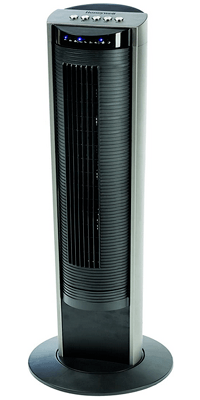
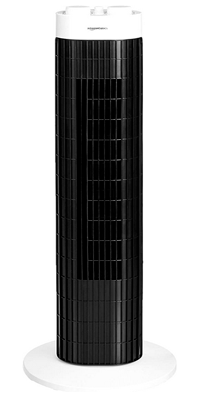
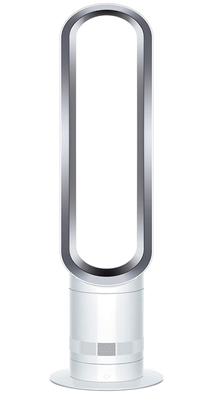
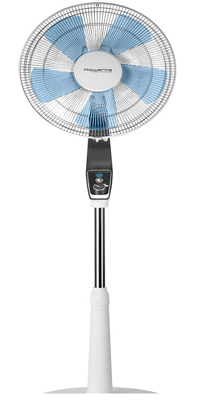



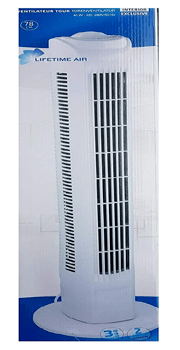

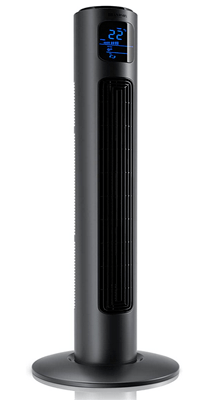


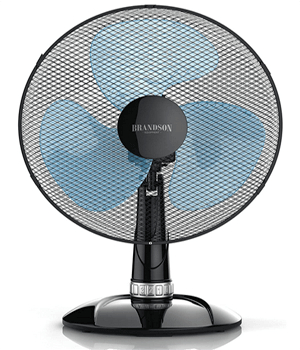
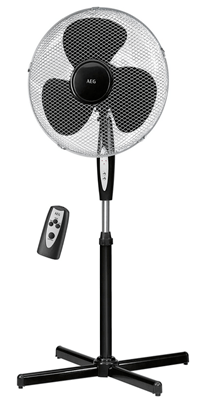

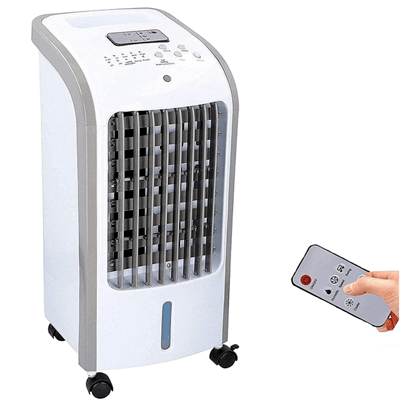
Post a Comment for "17 Best Floor Fan Indoor Airflow"